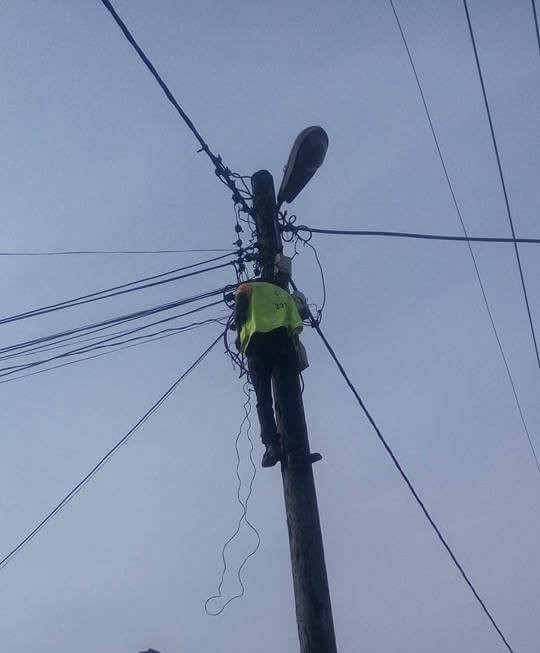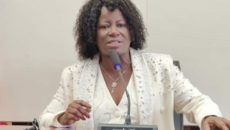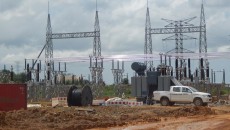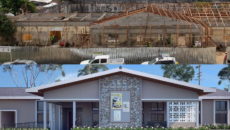PAYNESVILLE, Montserrado – As Liberia’s electricity generation capacity continues to increase, getting homes connected to the electricity grid continues to be very difficult and time-consuming.
Prior to switching on three of the four turbines of the Mount Coffee Hydropower Plant, Liberia had already added 38 MW of generation capacity through heavy fuel oil generation. The three turbines added 66 MW and when all four turbines are brought online, the hydropower plant will have a total capacity of 88 MW.
However, only about seven percent of Liberians have access to electricity from the grid today and many Liberians struggle to get connected.
“Only 15 MW of power is currently in use. We still have the potential for more connections and higher consumption,†said Monie Captan, the chief executive officer for the Millennium Challenge account, which funds part of the Mt. Coffee rehabilitation.
For ordinary Liberians, the rehabilitation of the hydropower plant would mean nothing if they cannot get connected to the grid.
Magdalene Mulbah, a resident of SKD Boulevard Junction community in Paynesville, told The Bush Chicken in an interview that it has been more than three years since she began the process of connecting her home through the Liberia Electricity Corporation.
“It is very much disheartening that in this long period, I have not got LEC connected to my house, despite meeting the requirements and paying the subscription fee and [being] issued [a] receipts,†Mulbah said.
According to her, she paid US$53.50 to a bank account designated by LEC and returned the slip to the utility’s customer care center. She said her situation is not unique and that other neighbors face the same situation. She blamed the system for the delays.
“I have been there several times and they have asked me to photocopy my pink slip and leave my telephone number, yet I have never been called or seen an LEC staff to get me connected,†she said.
Mulbah said others in her community who got their homes connected told her they had gone the extra mile by using their personal contacts to fast track their process to get connected or paying bribes.
According to Mulbah, customers are often told that connection materials are unavailable.
LEC Public Relations Specialist, Mambu James Kpargoi attributed the delays in getting connected to LEC grade current to reform phases the agency has been undergoing.
Kpargoi said the new management at LEC has taken steps to increase customers’ connection in relatively short period of time.
“This is one of the strategic vision of the new management, to ensure that customers are served in a very short possible time after payment of a connection fee and assessment is carried out by an LEC designated team,†he said.
Unlike in past months, Kpargoi said customers can now get connected in less than a week after paying a connection fee of US$ 53.50 for a single-phase meter and assessment is carried out.
But Kpargoi’s estimate of customers getting connected in less than a week proved overly confident when tested. A Bush Chicken reporter, Zeze Ballah, requested connection to a home after Kpargoi made his statement. It took him over a month to get connected – even though he made a note to the customer service agents that he was a journalist investigating the process, and provided Kpargoi with a copy of his receipt.
Although Ballah submitted his request for connection after Mulbah, he was connected to the grid, as she still waits for LEC, highlighting a common concern for many customers – that LEC is connecting on a first-come-first-served basis.
Even as customers like Mulbah wait for service, LEC’s management continues to boast of connecting thousands of new customers and launching campaigns to connect schools and places of worship.
The utility company has not made public just how long is the backlog of customers needing connection. LEC is notoriously bad at complying with requests for information. The Bush Chicken has already submitted requests seeking at least three pieces of information from the agency. Only one request has been answered, although LEC refused to provide the information.
LEC denied the Freedom of Information Act request to provide information on key performance indicators the agency collects that would allow The Bush Chicken to evaluate the quality of service the agency has been providing.
The request from The Bush Chicken was sent on Nov. 8, 2016, to LEC’s chief executive officer at the time, Peter Graham. In a response dated on Nov. 16, the agency’s legal counsel, Mayalan Keita-Brown, said although LEC strongly supports the promotion of the FOIA, it would deny the request.
Keita-Brown wrote that LEC was denying the request under a section of the law which exempts information relating to national defense, security, and international relations. Because LEC operates in collaboration with many international organizations, it could not “divulge any confidential information to other entities,†she said.
The Bush Chicken contested LEC’s initial response, citing the fact that the agency had previously provided some of that information to the World Bank and it had been published in the World Bank’s Doing Business report.
While the backlog of unconnected customers grows, a Bush Chicken investigation revealed that a contributing factor has been the shortage of meters at LEC.
Kpargoi confirmed the shortage but said it was due to the slow procurement procedure that LEC had to go through to get the meters brought to the country. He said the LEC meters are customized products made by Itron, a company based in South Africa.
In the absence of the LEC customized meters, he said the LEC does not connect any customer on a different meter.
Kpargoi denied claims that a few privileged individuals were still being connected even in times the corporation announced there were shortages of meters.
He said, people being connected during such period are those who had already met all the requirements and they are being connected on the remaining sets of meters.
Whatever explanation LEC provides, the best legal way to be connected is one of chance. One has to hope that they’re in one of the neighborhoods being connected to the grid for the first time. These grid expansion projects are usually donor-funded and all homes in an area are connected.
Featured photo by Gbatemah Senah



